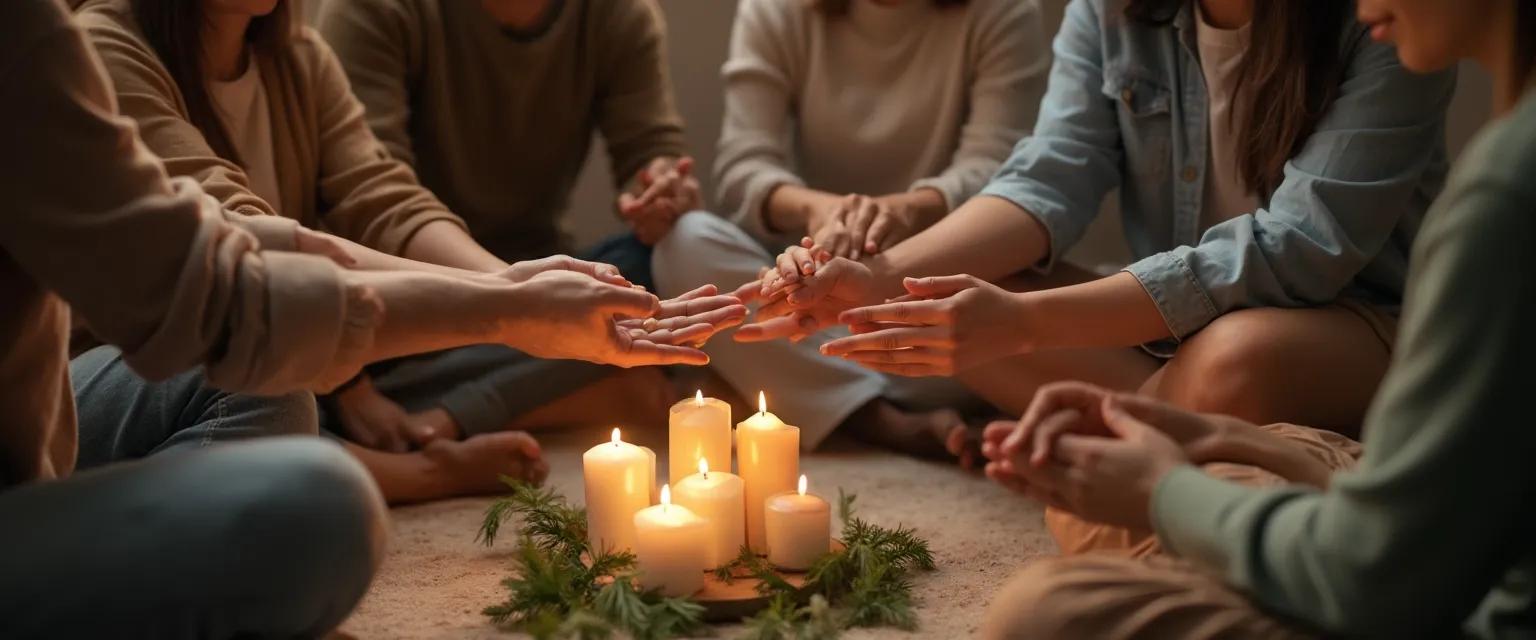5 Community Rituals That Heal Anxiety During Collective Trauma Events
When collective crisis strikes, the ripple effects of anxiety during collective trauma can feel overwhelming. Whether it's a pandemic, natural disaster, or social upheaval, these shared experiences create a unique form of psychological distress that differs from individual anxiety. Unlike personal anxiety, which may stem from specific life circumstances, anxiety during collective trauma creates a communal experience where entire communities navigate uncertainty together. This shared emotional journey provides a unique opportunity for healing through community-based approaches.
Research shows that structured community rituals provide a powerful antidote to the helplessness often experienced during collective crises. These rituals create predictability in chaotic situations and foster a sense of belonging when isolation threatens our wellbeing. Neuroscience explains why: communal ceremonies activate our brain's social connection networks while simultaneously calming our threat-response systems. When we engage in anxiety management practices together, we literally co-regulate our nervous systems.
Let's explore five community rituals that create stability and meaning during collective hardship, offering practical anxiety during collective trauma tips that communities worldwide have found effective.
5 Proven Community Rituals That Reduce Anxiety During Collective Trauma
1. Communal Storytelling Circles
Storytelling circles provide a structured space for processing difficult experiences. When community members gather to share narratives about their experiences during crisis, they create what psychologists call "narrative coherence" – the ability to make meaning from chaos. Indigenous cultures have long used storytelling as medicine, and modern research confirms its effectiveness for resilience building. The key is establishing clear guidelines: each person receives uninterrupted time to speak, listeners practice non-judgment, and facilitators guide the process toward constructive meaning-making.
2. Rhythmic Movement and Sound Ceremonies
From drum circles to community dances, rhythmic activities synchronize nervous systems and reduce stress hormones. During collective trauma, these practices help communities literally "get back in rhythm" together. Research shows that moving or making sound in unison creates social bonding through the release of oxytocin while simultaneously reducing cortisol levels. Even simple activities like community singing or synchronized breathing exercises qualify as effective anxiety during collective trauma techniques.
3. Symbolic Object Exchanges
Many cultures practice the exchange of meaningful objects during difficult times. These tangible symbols serve as physical reminders of community support. Examples include prayer flags in Tibetan communities, worry dolls in Guatemala, and modern adaptations like "courage stones" passed between neighbors. The science behind this practice involves the power of tactile reminders that activate our senses and ground us when anxiety peaks during collective crisis.
4. Nature-Based Restoration Rituals
Connecting with natural environments offers powerful anxiety relief during shared crises. Community gardens, tree planting ceremonies, and group nature walks provide both the psychological benefits of nature exposure and the social support of shared activity. These micro-habits help restore a sense of continuity and hope, particularly important during environmental disasters where the landscape itself may be damaged.
5. Digital Unity Ceremonies
Modern communities have adapted traditional rituals for online spaces. Virtual candlelight vigils, synchronized moments of silence across social platforms, and digital memorial walls create connection despite physical distance. These adaptations prove especially valuable during crises requiring physical separation, offering anxiety during collective trauma strategies that transcend geographical boundaries.
Creating Your Own Anxiety-Reducing Rituals During Collective Trauma
Designing effective community rituals doesn't require extensive training. Instead, follow this simple framework:
- Establish rhythm and repetition – Schedule regular gatherings (weekly or monthly) to create predictability
- Include sensory elements – Incorporate sounds, textures, or movements that engage multiple senses
- Create clear boundaries – Designate specific beginning and ending points for the ritual
- Allow for personalization – Balance structure with room for individual expression
Start small and build consistency. A simple weekly neighborhood walk can evolve into a powerful healing ritual when framed intentionally. Digital communities can establish virtual check-ins with specific opening practices that signal "we're entering community space now."
The effectiveness of these practices comes from their consistency rather than their complexity. When measuring impact, look for subjective improvements in community connection and individual anxiety levels rather than perfect execution.
Implementing these community-based approaches provides practical ways to address anxiety during collective trauma without requiring extensive resources. By drawing on both ancient wisdom and modern neuroscience, these rituals offer sustainable paths for communities navigating shared crises. The beauty of ritual is that it transforms ordinary actions into meaningful practices that heal not just individuals, but entire social systems affected by collective trauma.




